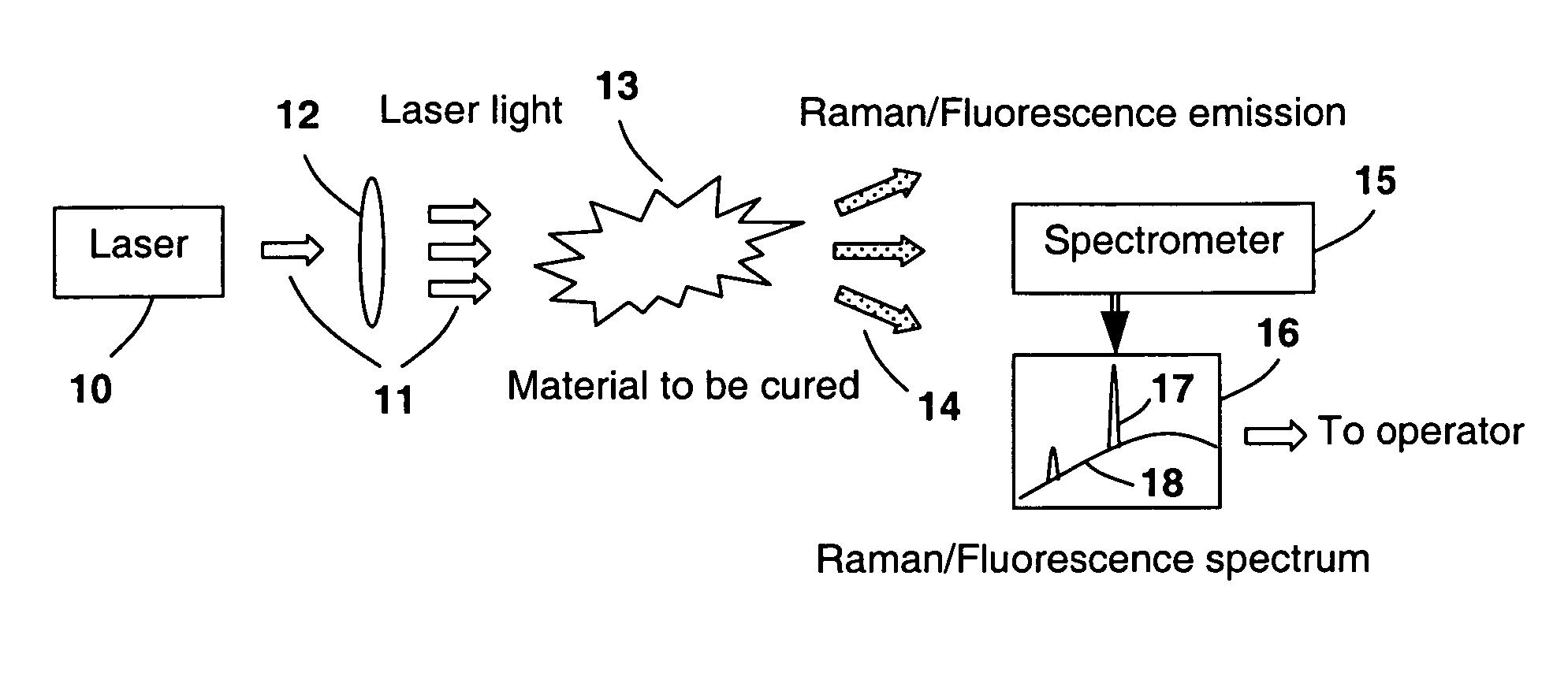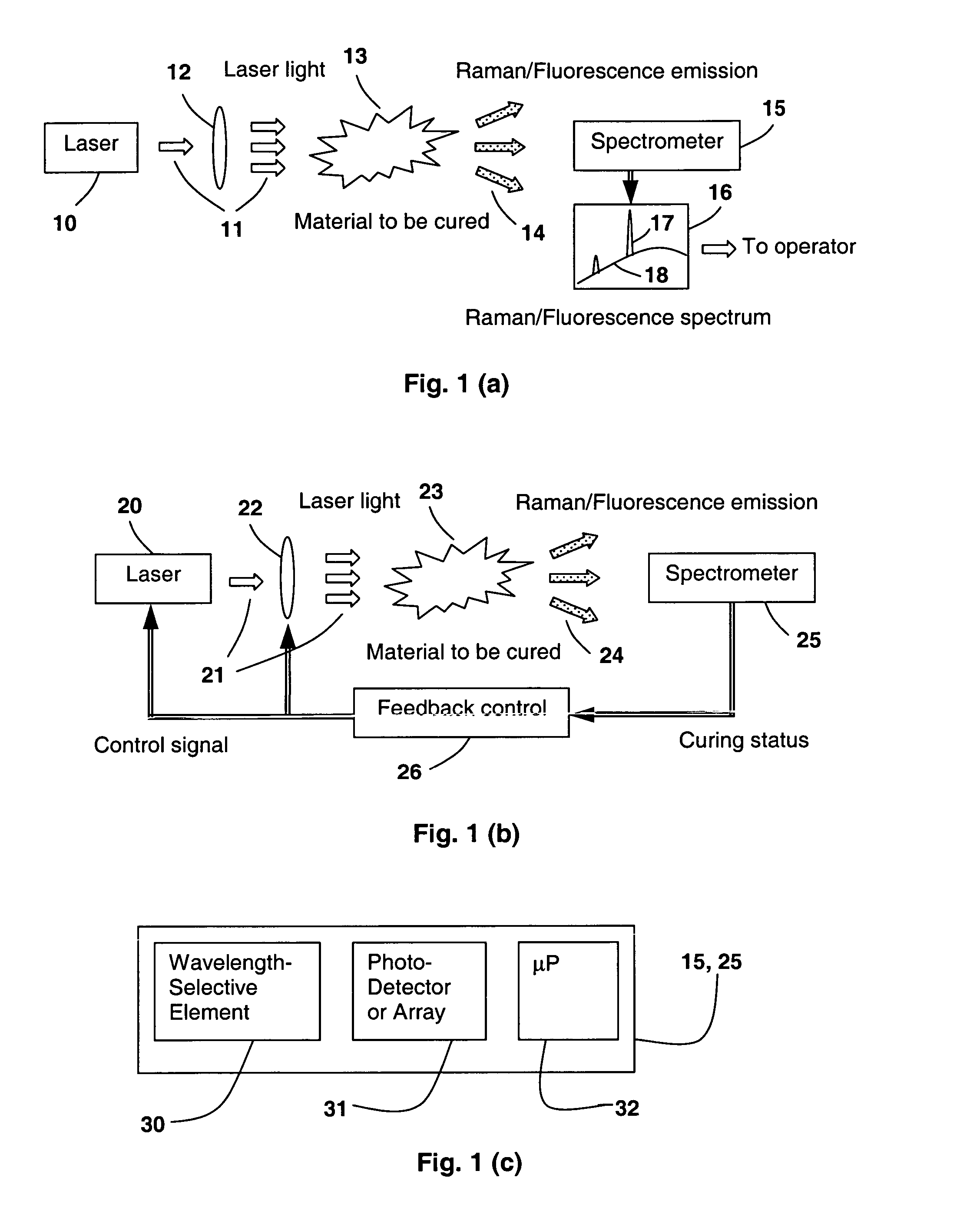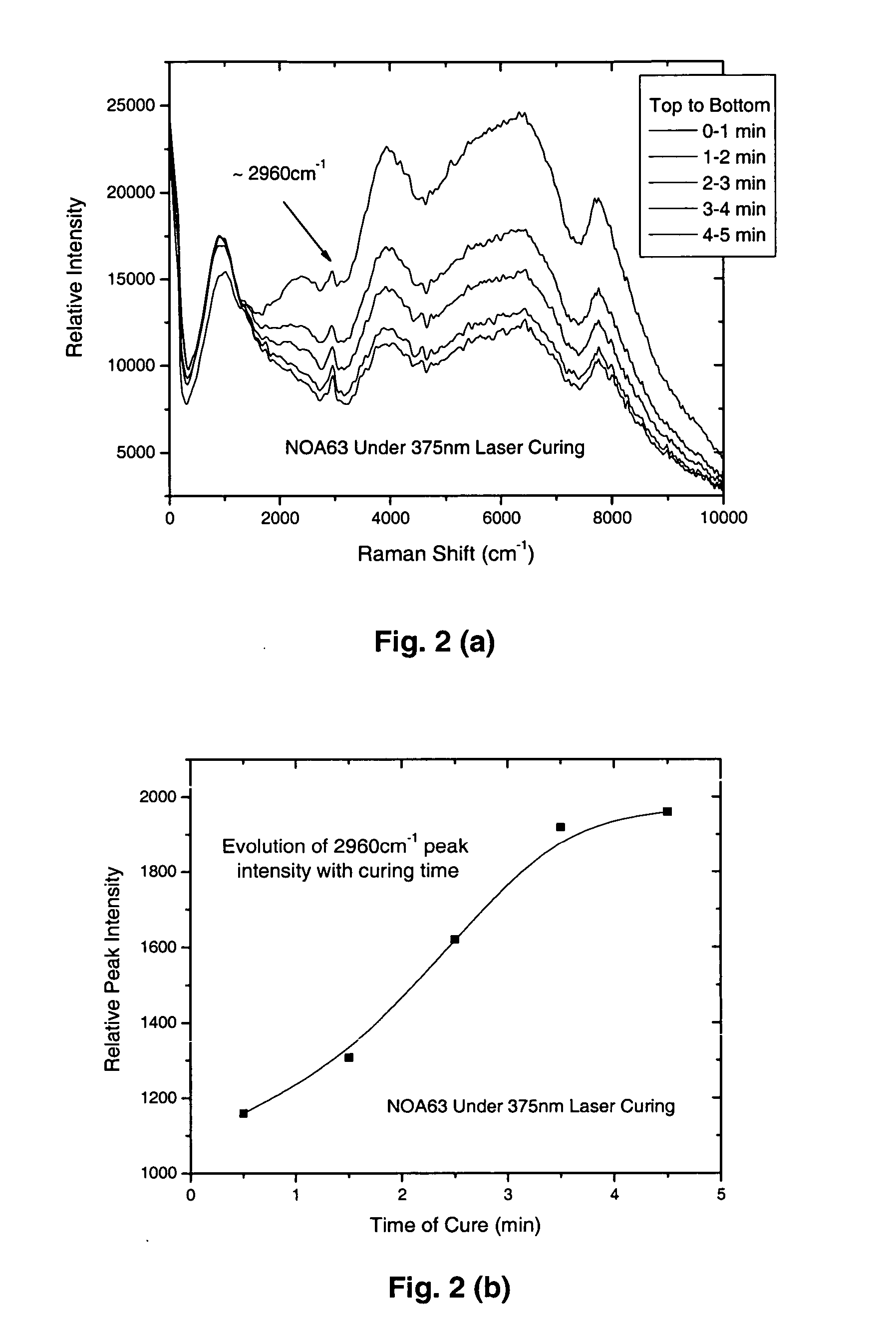Laser curing apparatus with real-time monitoring and control
a curing apparatus and real-time monitoring technology, applied in the field of curing equipment, can solve the problems of high cost and high cost of curing system, and achieve the effect of improving curing results and avoiding overcuring
- Summary
- Abstract
- Description
- Claims
- Application Information
AI Technical Summary
Benefits of technology
Problems solved by technology
Method used
Image
Examples
Embodiment Construction
[0020] Preferred embodiments of the present invention will now be set forth in detail with reference to the drawings.
[0021] A schematic representation of the laser curing apparatus is shown in FIGS. 1 (a) and (b). In FIG. 1 (a), the curing laser 10 produces laser light 11, which is first transformed (focused, expanded, collimated) by a secondary optical system 12 and then absorbed by the material 13 to induce and / or accelerate the polymerization process. The laser light 11 in the mean time excites Raman / fluorescence emission 14 from the material 13 during the cure process. An optical spectrometer 15 is used to collect and analyze the Raman / fluorescence signal and produces a Raman / fluorescence spectrum 16, which is composed of Raman signal 17 and fluorescence background 18. The intensity and wavelength position of the Raman signal 17 are used to determine the curing status of the material in real time since the Raman signal 17 is directly related to the vibration / rotational energy l...
PUM
 Login to View More
Login to View More Abstract
Description
Claims
Application Information
 Login to View More
Login to View More - R&D
- Intellectual Property
- Life Sciences
- Materials
- Tech Scout
- Unparalleled Data Quality
- Higher Quality Content
- 60% Fewer Hallucinations
Browse by: Latest US Patents, China's latest patents, Technical Efficacy Thesaurus, Application Domain, Technology Topic, Popular Technical Reports.
© 2025 PatSnap. All rights reserved.Legal|Privacy policy|Modern Slavery Act Transparency Statement|Sitemap|About US| Contact US: help@patsnap.com



